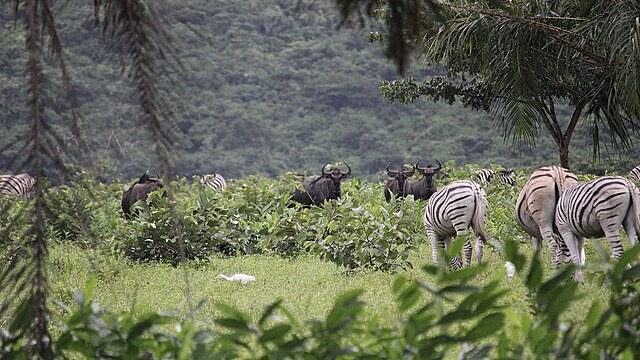In the Democratic Republic of Congo, the line between the raw power of nature and the pulse of human life is rarely clear. This vast nation — a mosaic of rainforest, savannah, volcanic slopes, and dense urban sprawl — resists simplification. Its landscapes and cities present themselves with equal intensity, each demanding their own kind of endurance.
The journey began in Goma, the fractured lakeside city that serves as the gateway to Virunga National Park. The park’s renown rests partly on its most famous residents: the endangered mountain gorillas that survive in scattered highland refuges. Meeting a family of gorillas in the forest is a quiet, almost reverent exchange — a rare moment when the enormity of deep evolutionary time presses close.
But Virunga is more than gorillas. Within its boundaries, rainforest gives way to savannah, which in turn yields to the stark, ashen flanks of Mount Nyiragongo. The climb up its rugged slopes demands stamina and a steady mind; the earth underfoot radiates heat from a restless core. At the summit, the world’s largest lava lake glows red against the night, its surface in constant motion — seething, splitting, knitting itself together again. For those who brave the chill, a night in the spartan summit shelters offers uninterrupted communion with that molten abyss.
Southward, the expedition shifted toward the country’s urban heart. Kinshasa, sprawling along the Congo River, moves to a rhythm entirely its own. The capital’s streets erupt with music and chatter, its markets thick with vendors, produce, and a measured chaos. Among it all, the Sapeurs — impeccably dressed men whose bright suits and polished shoes defy their surroundings — bring flashes of elegance into the everyday fray.
The river itself remains the city’s great constant, broad and muscular, dividing Kinshasa from Brazzaville. From the water, the skyline softens, and on certain evenings the sun slides into the horizon with an unexpected gentleness. A short drive away, the Lola ya Bonobo sanctuary offers another of the country’s wonders: orphaned bonobos, a species found only in the DRC. Their intricate social bonds, flashes of curiosity, and moments of tenderness make their resemblance to humanity startling.
Beyond the capital, the realities of travel in the DRC assert themselves. Roads are often unreliable; flights can vanish from the day’s schedule without notice. Yet these interruptions, frustrating as they may be, are woven into the fabric of moving through this country. The journey is dictated by the DRC’s own terms, not those of the traveler.
Far to the south, on the green hills overlooking Lake Kivu, Bukavu offers a gentler interlude. Its streets may be worn, but the hospitality is unwavering. The lake — one of Africa’s great inland seas — laps quietly at its shores, its surface mirroring the slow pace of local life.
The DRC is not a place that seeks to charm through convenience. Its rewards are earned in patience and persistence, in an openness to the unpredictable. From Virunga’s volcanic glow to Kinshasa’s fevered streets, it remains a country where the spirit of exploration feels intact — and where each moment, however challenging, carries the imprint of the extraordinary.
Sources
- Virunga National Park. “Wildlife and Conservation in Virunga.” Virunga.org. Accessed August 2025.
- United Nations Educational, Scientific and Cultural Organization (UNESCO). “Virunga National Park.” UNESCO World Heritage Centre.
- Lola ya Bonobo. “About Bonobos.” Lola ya Bonobo Sanctuary. Accessed August 2025.
- Stearns, Jason K. Dancing in the Glory of Monsters: The Collapse of the Congo and the Great War of Africa. PublicAffairs, 2011.


